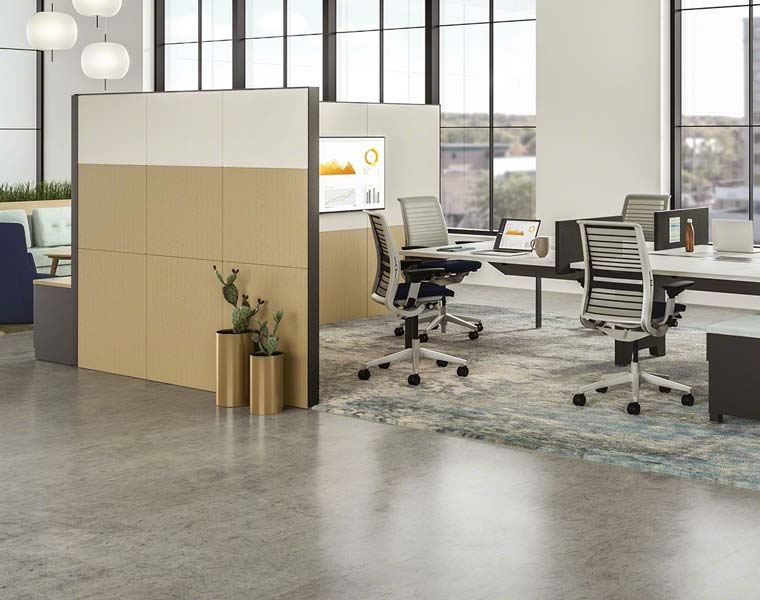You’ve most probably stumbled across this blog post through doing some research ahead of an upcoming workspace transformation project. You might have completely new premises to start from scratch with, or perhaps you’re looking to update an existing space which has been in use for many years already and become outdated.
Whichever point you’re at, it’s essential that you understand exactly what your objectives are for the project before investing valuable time and money into it. Getting to grips with the difference between the various phases of workplace fit out is a great place to start.
The Shell & Core fit out phase
This is where the whole process begins, when the interior space is nothing but an empty shell. Core elements have been installed to make the space operational and structurally sound such as cladding, staircases and stairwells, external structure and lift shafts.
Once the Shell & Core phase is complete, you then have a blank canvas on which personalisation and unique internal structuring can start to take shape.
What does Cat A fit out mean?
Now the foundations are in place, the next level of personalisation can take place. This part of the process encompasses elements including things like raised flooring, partition walls, suspended ceilings, pillars, beams and any necessary surface finishes.
At this point, you should have a basic level of finish and be able to see your conceptual designs starting to come to life. Now, you can progress with really making the space your own through the final stage of the fit out process.

What is a Cat B office fit out?
This is what could be considered the fun part and perhaps the bit in the fit out process which is so closely related to refurbishment (more on that in a moment). This is where things like furniture products, fabrics, colours, décor, specialist lighting and aesthetic finishes are introduced.
It’s during this phase that brand communication through office design comes into play and the various different types of work setting can come to life.
For example:
Soft seating and resimercial accents can be added to create a relaxed rejuvenation space, or tech-integrated furniture and group seating can be introduced to create a purpose-built collaboration space.
Don’t forget about snagging
As part of our approach to office fit out for our customers in Manchester, Liverpool and across the North West, we take the snagging phase seriously. When choosing your partner or specialist for the job, this is something you need to look out for as it can sometimes be deliberately or accidentally overlooked in the project timeline.
The snagging process should involve a thorough walk-around of the space with both client and partner to check everything is as it should be and to the required standard. Any issues that may arise from this are typically referred to as ‘snags’ and will then need to be addressed before the project can be deemed complete.

Okay, so, what’s the difference between fit out and refurbishment?
If you’re unfamiliar with the commercial design industry and its associated lingo, understanding the difference between these two things can be tricky. Admittedly, the differences are subtle but when planning a workspace transformation or interior design project, it’s important to know exactly what it is you’re looking for.
The two are closely related, of course, but the main differences lies in how fit out is more about rethinking the internal structure of a space or making a concrete shell an inhabitable workspace. Refurbishment tends to come further down the line when an existing space becomes outdated or needs refreshing on account of specific workplace issues.

For example:
If a customer came to us saying that noise distraction in an open plan office is becoming a particular problem for their business, we would recommend either of the following options, depending on factors like budget and severity of the issue:
Fit out – Reconfiguring the structural layout of the place to reintroduce some space division e.g. partition walls. Planning and building in specific private spaces where people can go to find quiet and isolation when necessary, which might require the creation of new internal spaces that don’t already exist.
Refurbishment – Swapping existing furniture for (or just introducing some) acoustically-enhanced furniture to help absorb excess noise. Updating the design of the space with things like acoustic wall panels and sound-absorbing light shades. Investing in something like an acoustic pod or shielded meeting space to escape the hustle and bustle of the open work area.
Other bits of advice you might find helpful:
- Tips on how to limit disruption during an office fit out or refurbishment.
- The benefits of partnering with a fit out specialist and why it’s recommended.
- Some guidelines around what an office fit out should cost.




